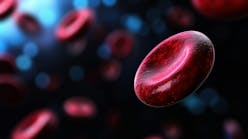Cardiac biomarker testing in the clinical laboratory has evolved in the last fifty years from tedious and lengthy to automated and rapid procedures. Currently the biomarker of choice by most clinical experts is troponin, which was first released as a commercially available assay in 1995, with most applications found on core laboratory analyzers. To date, the FDA website lists more than 140 troponin test systems, most of which are categorized as moderate complexity, ranging from applications on large platform chemistry analyzers to handheld devices. Since the original commercially available assay was introduced, manufacturers have focused on developing higher sensitive troponin assays, often in combination with analyzers that can be used at the point of care.
Industry experts began convening in the year 2000 to provide a definition for acute myocardial infarction while emphasizing the utility of highly sensitive troponin. These experts continue to evaluate evidence and outcomes to edit this definition while seeking methods to standardize troponin testing. Concurrently, accrediting bodies have been examining the utility of faster turnaround times and have developed recommendations to enable a quicker diagnosis and better outcomes. In combination, there is evidence that highly sensitive troponin testing performed at the point-of-care produces better outcomes, thus saving lives, time, and money.
In 2000, the First Global Task Force, which consisted of worldwide experts in the field of acute coronary syndrome, presented their definition of myocardial infarction. The “Universal Definition of Acute Myocardial Infarction (AMI)” was published in 2007, and the third update was most recently issued in 2012 by the task force. The definition is endorsed by the European Society of Cardiology (ESC), the American College of Cardiology Foundation (ACCF), the American Heart Association (AHA), and the World Heart Federation (WHF), and has been well accepted by the medical community and adopted by the World Health Organization (WHO). In the third definition, troponin is emphasized as the cardiac biomarker as follows: “The term acute myocardial infarction (MI) should be used when there is evidence of myocardial necrosis in a clinical setting consistent with acute myocardial ischemia.” The definition states that along with other clinical findings there should be the “detection of a rise or fall of cardiac biomarker values (preferably cardiac troponin [cTn]) with at least one value above the 99th percentile upper reference limit (URL).”
The third definition publication further says, “Optimal precision, as described by coefficient of variation (CV) at the 99th percentile URL for each assay, should be defined as £10%. Better precision (CV £10%) allows for more sensitive assays and facilitates the detection of changing values. The use of assays that do not have optimal precision (CV >10% at the 99th percentile URL) makes determination of a significant change more difficult, but does not cause false positive results. Assays with CV >20% at the 99th percentile URL should not be used.”1
The National Academy of Clinical Biochemistry 2007 publication “Biomarkers of Acute Coronary Syndromes and Heart Failure” provided similar guidelines as related to recommended use of a cutoff at the 99th percentile of values for a reference group and optimal precision defined by total CV <10%.2 The publication also states that observation of a rise and/or fall in values is useful in discriminating the timing of injury.2
It is estimated that currently only about half of laboratories have adopted the 99th percentile cutoff,3 which would indicate that the other half are using the traditional Receivers Operating Characteristic (ROC) curve’s cutoff or other cutoffs that they have adopted. One of the reasons for this low adoption rate is the perceived risk of false positives, i.e., patients whose values are above the 99th percentile but lower than the ROC cutoff and do not show the rise or fall. While these patients, often referred to as gray zone patients, are not experiencing an MI, cardiac muscle necrosis is occurring, and follow up care by a cardiologist is critical. The use of guideline-driven, accurate, and precise highly sensitive methods are essential in diagnosing patients with these low values.
While identifying gray zone patients is critical to their long term care, discharging a patient from the emergency department (ED) due to a false negative diagnosis can have consequences just as dire. Twenty-five percent of cardiac patients who were misdiagnosed as negative for AMI and sent home either died or experienced potentially lethal complications.4 Clinicians using troponin assays that do not meet the precision guidelines run the risk of missing elevations that are significant and thus put the patient at risk of being sent home with a false negative AMI diagnosis. Troponin assays that meet the guidelines can better detect these low levels of troponin and can accurately detect any rise or fall with serial testing. Further evidence that highly sensitive troponin assays save lives came in a study by Mills et al: “Implementation of a sensitive troponin assay increased the diagnosis of MI and identified patients at a high risk of recurrent MI and death.”5 The ability to accurately lower the diagnostic threshold for MI by using this sensitive assay improved clinical outcomes and was associated with a lower risk of death and recurrent MI (21% for sensitive assay vs. 39% using the previous generation assay).5
This becomes even more important as hospitals look at accelerated discharge protocols. Studies to determine if patients can be safely discharged in as little as two hours from their ED presentation using troponin results are currently underway; however, this will only be possible if the troponin assay has the necessary precision and accuracy to measure low levels of troponin. For gray zone patients, quick discharge from the ED with an immediate referral to a cardiologist is what is important. Proper diagnosis and treatment of the underlying condition can begin right away, saving both the hospital and patient time and money. Patients who are misdiagnosed as negative for AMI and discharged, and gray zone patients that are not diagnosed, run the risk of death or complications.
Conducting laboratory testing at the point of care has been shown to improve turnaround time, and when it comes to treating potential AMI patients many physicians feel that “time is muscle.” Two healthcare accrediting agencies, the Society for Cardiovascular Patient Care (SCPC) and the College of American Pathologists (CAP), have integrated troponin turnaround time into their standards of care. SCPC has developed a matrix for monitoring troponin turnaround time, and CAP has developed Quality Monitor QM1 to facilitate troponin turnaround time monitoring. For point-of-care analyzers SCPC requires a minimum of 60-minute collect-to-result turnaround time with 90% compliance. The processes involved from order to result or even collection to result make it extremely difficult for a core lab to be able to produce a result in 60 minutes. Many hospitals’ turnaround time significantly exceeds the 60-minute mark, so they are turning to point-of-care methods in order to improve their process. However, many point-of-care devices have the reputation of being more semi-quantitative than the more precise quantitative methods seen in core labs.
The American College of Cardiology (ACC) recently convened a panel of experts to consider the available evidence and develop a document on considerations in interpreting troponin elevations. They discussed the point-of-care challenge when doing serial troponin measurements: “To confirm a rise and/or fall from an initially positive assay would require serial quantitative testing and, in general, high-quality quantitative assays are preferred.” The ACC panelists challenged the point-of-care industry to meet the same characteristics as quantitative tests offered in the core lab. Only a few point-of-care analyzers currently have met the challenge.6 Their analyzers provide the ability to have better turnaround times and meet the precision guidelines that the experts recommend.
Running highly sensitive troponin testing at the point of care has not only been shown to save valuable time but also has been shown to save hospitals money. One study showed that doing this testing in the ED reduced the total charges per admission by 25% ($17,163 vs. $12,882) while decreasing turnaround time from 76 minutes to 19 minutes.7 As healthcare reform is being implemented it is important for the ED to be run as efficiently as possible. The use of point-of-care, highly sensitive troponin plays a big role in identifying negative or gray zone patients who can be discharged more quickly with confidence that they are not being misdiagnosed. One study found that using a highly sensitive, point-of-care troponin assay was associated with an increased rate of successful discharge within four hours, 32%, as opposed to 13% for the group that had testing done in the core lab, and it also reduced the median length of stay.8
While there are many troponin assays to choose from, evidence points to the use of highly sensitive point-of-care assays to help save lives in a fast and cost-effective way.
References
- Thygesen K, Alpert J, Jaffee A, Simoons M, Chaitman B, White H; Joint ESC/ACCF/AHA/WHF Task Force for the Universal Definition of Myocardial. Third universal definition of myocardial infarction. Eur Heart J. 2012;33:2551-2567.
- National Academy of Clinical Biochemistry. Laboratory Medicine Practice Guidelines: Biomarkers of Acute Coronary Syndromes and Heart Failure. Washington, DC: NACB; 2007.
- Titus K. To see troponin’s future, look at the present. CAP Today. 2012;26(7):cover.
- McCarthy B, Beshansky J, D’Agostino R, Selker H. Missed diagnoses of acute myocardial infarction in the emergency department: results from a multicenter study. Ann Emerg Med. 1993;22(3):579-582.
- Mills NL, Churchhouse A, Lee KK, et al. Implementation of a sensitive troponin I assay and risk of recurrent myocardial infarction and death in patients with suspected acute coronary syndrome. JAMA. 2011;305(12):1210-1216.
- Rollins G. New, practical guidance for cardiac troponin. Clin Lab News. 2013;39(2):cover.
- Apple F, Chung A, Kogut ME, Bubany S, Murakami M. Decreased patient charges following implementation of point-of-care cardiac troponin monitoring in acute coronary syndrome patients in a community hospital cardiology unit. Clin Chem Acta. 2006;370(1-2):191-195.
- Goodacre S, Bradburn M, Cross E, et al.; RATPAC Research Team. The Randomised Assessment of Treatment using Panel Assay of Cardiac Markers (RATPAC) trial: a randomised controlled trial of point-of-care cardiac markers in the emergency department. Heart. 2011;97(3):190-196.






